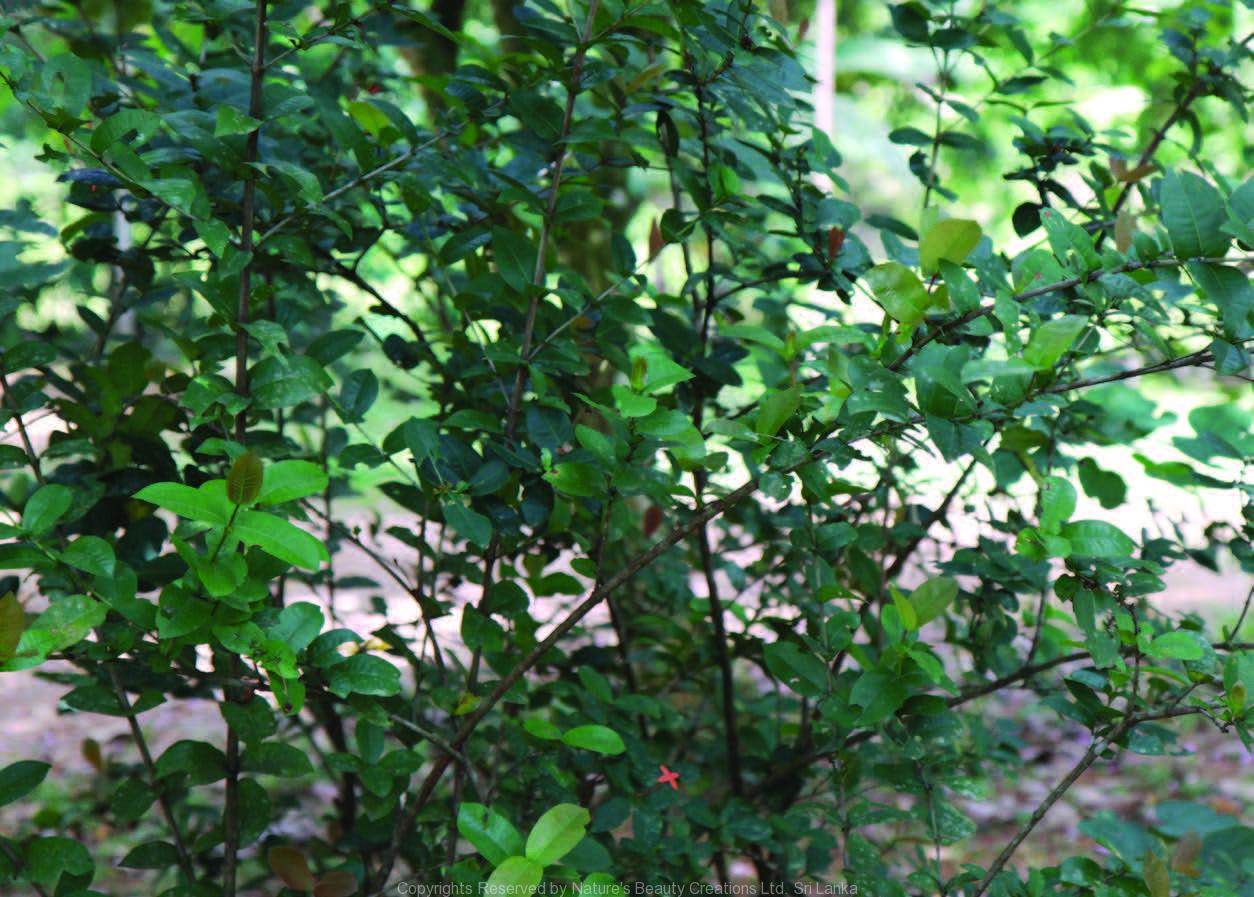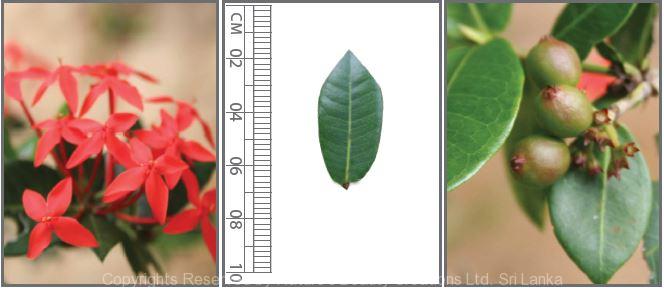

Traditional Knowledge
Useful plant parts :
Flower
Uses in traditional medicine :
- One drop of fresh flower juice is used to treat redness of the eye
- Flowers soaked in luke warm water is used for bathing infants to protect against skin disease
- Used as a sedative for hiccups, for loss of appetite, for fever and gonorrhoea
- Used in the treatment of dysentery, haemoptysis, catarrhal bronchitis and dysmenorrhea
Scientific Research
Chemical constituents:
Triterpenes: ursolic, oleanolic acids, ixoroid and lupeol from essential oil of flowers; cycloartenol esters from flowers; peptides: ixorapeptide I and II from plant
Bioactivity :
Ether, methanol and aqueous extract of leaves: antibacterial, cardioprotective, anti-inflammatory, antinociceptive; alcohol extract of flowers: wound healing; antidiarrhoeal, antioxidative; n-hexane extract of flowers: cytotoxic and antitumour
Clinical:
References : Annapurna, J. et al., (2003), Antimicrobial activity of Ixora coccinea leaves, Fitoterapia, 74, 291–293. Baliga, M. S. and Kurian, P. J., (2012), Ixora coccinea Linn.: traditional uses, phytochemistry and pharmacology, Chin J Integr Med, 18(1), 72-9. Consolacion Y. R. et al., (2004), New Cycloartenol Esters from Ixora coccinea, Natural Product Research, 18(4), 319-323. Handunnetti, S. M. et al., (2009), Anti-inflammatory activity of Ixora coccinea methanolic leaf extract, Pharmacognosy Research, 1(2), 80-90. Latha, P. G. and Panikkar, K. R., (1998), Cytotoxic and antitumour principles from Ixora coccinea flowers, Cancer Letters, 130, 197–202. Lee, C. L. et al., (2010), Ixorapeptide I and ixorapeptide II, bioactive peptides isolated from Ixora coccinea, Bioorg Med Chem Lett, 20(24), 7354-7. Maniyar, Y. et al., (2010), Antidiarrheal activity of flowers of Ixora Coccinea Linn. in rats, J Ayurveda Integr Med, 1(4), 287-91. Momin, F. N. et al., (2012), Cardioprotective effect of methanolic extract of Ixora coccinea Linn. leaves on doxorubicin-induced cardiac toxicity in rats, Indian J Pharmacol, 44(2), 178-83. Nayak, B. S. et al., (1999), Effect of Ixora coccinea flowers on dead space wound healing in rats, Fitoterapia, 70, 233-236. Obuzor, G. U. and Nwakanma, G. U., (2011), Chemical composition of essential oil of Ixora coccinea flower from port harcourt, nigeria, International journal of academic research, 2(3), 381-384. Ratnasooriya, W. D. et al., (2005), Antinociceptive action of aqueous extract of the leaves of Ixora coccinea, Acta Biologica Hungarica, 56(1-2), 21-34. Saha, M. R., (2008), In vitro free radical scavenging activity of Ixora coccinea L., A Journal of the Bangladesh Pharmacological Society, 3, 90-96. Versiani, M. A. et al., (2012), Ixoroid: a new triterpenoid from the flowers of Ixora coccinea, Nat Prod Commun, 7(7), 831-4.
Copyrights Reserved By
Natures Beauty Creations



